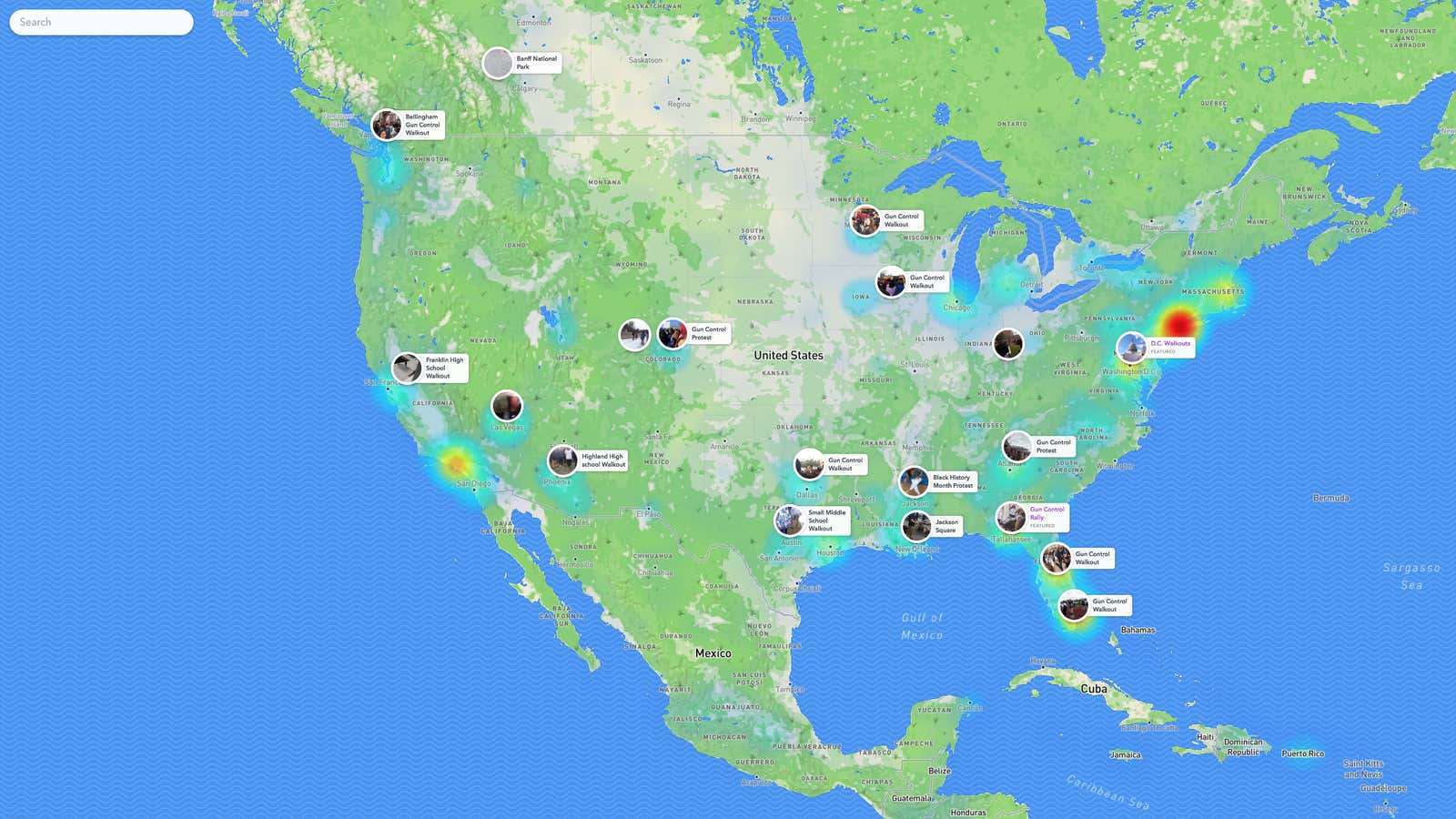Across the US today, Feb. 21, high school students have been organizing walkouts over gun control, a week after a gunman opened fire at the Marjory Stoneman Douglas High School in Parkland, Florida, killing 17 students and teachers.
Survivors have been outspoken on the issue of furthering gun control in the US after watching their classmates gunned down by assault-rifle fire. They traveled to Washington, DC, today to speak with lawmakers over tightening access to these sorts of weapons, as well as mental health laws. President Donald Trump also met with students to discuss gun violence Wednesday afternoon. On Tuesday, Trump ordered the Justice Department to regulate the sale of “bump-stocks” for guns, which effectively turn semiautomatic weapons into automatic weapons.
Students across the country walked out of schools in a show of solidarity with the rally in DC, and many of the walkouts were captured on Snapchat.
In its IPO paperwork, Snap, Snapchat’s parent company, said that 85% of its daily users in the US were under the age of 35. (Of those users, 36% are between the ages of 18 and 24, and 22% were between 13 and 17.) A recent report from eMarketer said Snap boasts more users in the 12-to-24 demographic than Instagram.
Snap confirmed to Quartz that, as the company has grown since its IPO, and it’s tried to make the app more accessible for older users, that figure now stands at 83%. It had 80 million daily users in the US, Snap said on its most recent earnings call.
Snapchat launched a feature in 2017 called Snap Maps, which plots videos and photos posted by users against a map of the world. Users have to opt in to share posts, and they disappear after 24 hours, like any other public post on Snapchat. It’s proven to be a valuable, honest, and raw lens into modern life, where tragedies like school shootings, natural disasters, and political unrest have been documented in real time by regular people as the events unfold.
Earlier this month, Snapchat brought Snap Maps to the web, and allowed anyone to view public posts online, regardless of whether they had a Snapchat account or even a smartphone. Videos collected and curated by Snapchat are also included, which Snap calls “Our Stories.” These can now be embedded in news posts (just like this one), and don’t disappear after a day.
Here’s Snap’s collection of stories from the walkouts across the US today:
[protected-iframe id=”475ad1f332d36ced471fd8ecaead90e9-39587363-83109772″ info=”https://play.snapchat.com/p:story:dcwalkouts” width=”432″ height=”768″ frameborder=”0″]
Footage of many of the other walkouts across the US has been surfaced by Snapchat and is available on Snap Maps right now. But if you’re reading this story after Feb. 22, 2018, I’m sorry to tell you that they are gone forever. Such is the nature of Snapchat.
Snap Maps is a lens into the minds of the next generation of voters. As more young Americans ditch Facebook, they’re flocking to other apps, like Snapchat, Houseparty, and Instagram, to communicate, debate, and organize. While the last two presidents may have been elected because of Facebook (potentially for quite different reasons), there’s no guarantee that it will hold the same sway with voters who see it as a platform for their parents, and not the future.
